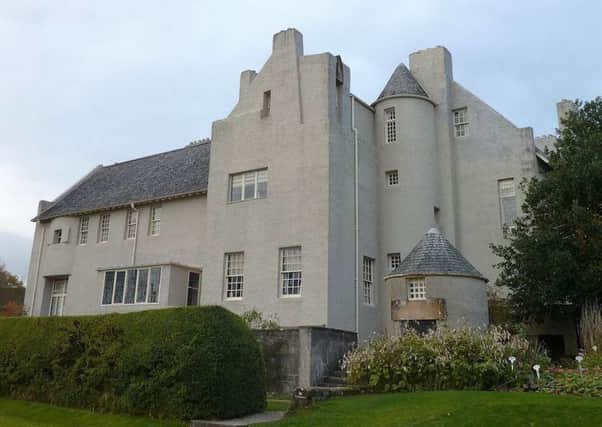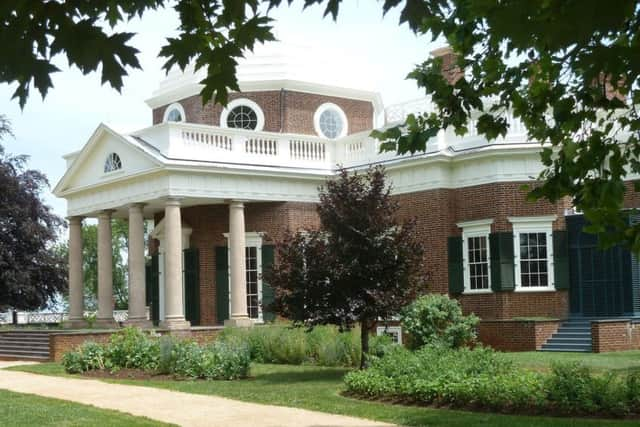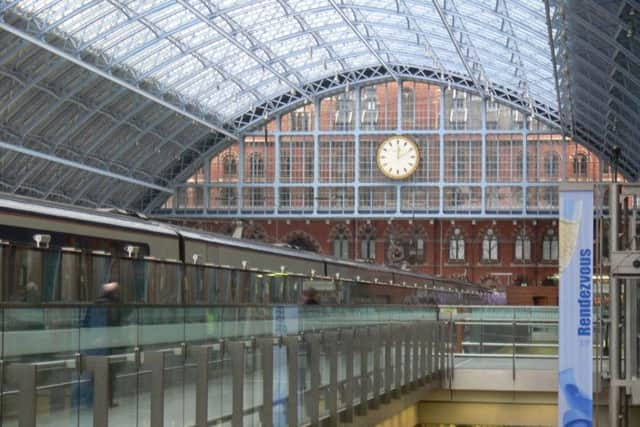The Civic Society column with David Winpenny


There are a few buildings that have significant landmarks –1868, 150 years ago, saw the opening of the arched train shed at St Pancras Station, designed by the engineer William Henry Barlow (Sir Gilbert Scott’s Midland Hotel followed later) and of St Andrew’s Cathedral in Sydney, Australia, by the largely-self-trained architect Edmund Blackett. 1868 was also the year in which Alfred Waterhouse won the competition to build Manchester Town Hall.
A century before the American statesman Thomas Jefferson began designing his Palladian-inspired house in Virginia, Monticello, and in 1718 the church of St Alfege in Greenwich was opened – the first church by Nicholas Hawksmoor, designer of Ripon’s obelisk.
Advertisement
Hide AdAdvertisement
Hide AdIn 1668 St Peter’s Square in Rome was completed by its architect, Bernini.


In the same year Christopher Wren’s Sheldonian Theatre in Oxford was opened.
Coming more up to date, in 1968 James Stirling’s ground-breaking History Faculty at the University of Cambridge was completed.
So much for buildings. What about architects? On the whole, they are a minor lot.
Advertisement
Hide AdAdvertisement
Hide AdWho knows much about the architect James Pigott Pritchett, who died in York on 23 May 1868 and was buried in York Cemetery, whose buildings he had designed?


He was also responsible for the former Savings Bank in York’s St Helen’s Square and Saltmarsh Hall in East Yorkshire, as well as a new street front, designed with his partner Charles Watson, for Lord Burlington’s Assembly Rooms in York’s Blake Street.
Or what about David Hamilton, born on 11 May 1768?
If you know Glasgow, his name may be familiar, for he was that city’s leading architect for 30 years, though he never made a name for himself as great as Alexander ‘Greek’ Thomson, the bicentenary of whose birth was last year.
Hamilton was responsible for Glasgow’s Royal Exchange (now the Gallery of Modern Art) and laid out buildings on the city’s Necropolis, as well as designing churches and country houses.


Advertisement
Hide AdAdvertisement
Hide AdThe architect George Dance the Elder died in the year Hamilton was born. He is known mainly for his design form London’s Mansion House. His son, George Dance the Younger, designed the now-demolished Newgate Prison; a door from it, through which the thief Jack Sheppard escaped, can be seen at Newby Hall.
A century later Stanley Adshead was born, on 8 March 1868. He was a town-planner and architect; among his works is Dormanstown, a workers’ settlement for the Dorman Long steel works at Redcar. He also published a series of planning surveys of a wide range of places, including south Teesside, Scarborough and York.
Perhaps of more importance was Sir Alfred Brumwell Thomas, born in 1868, who was most famous and a Neo-Baroque of ‘Wrennaisance’ architect in the Edwardian period. His main works are the City Hall in Belfast and Stockport Town Hall.
Of much greater stature was Thomas Archer, born in 1668. He was an important English Baroque architect, though little of his work is still extant. Influenced on the Grand Tour by the architecture of Bernini and Borromini, he is known today for work at Chatsworth House, including the temple at the head of the Cascade, for a garden pavilion in Wrest Park, Bedfordshire and for the church (now the cathedral) of St Philip in Birmingham.


Advertisement
Hide AdAdvertisement
Hide AdThe most modern of our architects with an anniversary this year is the centenarian Jørn Utzon. He was a Dane, but his chef d’oeuvre is on the opposite side of the world; he was the designer of the Sydney Opera House.
Although you have no doubt heard of at least one of these architects, perhaps none of them is particularly famous. But you are almost guaranteed to know the name of the most famous of the architects whose anniversary falls this year. It is the 150 years since the birth of Charles Rennie Mackintosh.
Born in Glasgow on 7 June 1868, Mackintosh showed early promise as a draughtsman, winning the Alexander (‘Greek’) Thomson Travelling Scholarship, which enabled him to study ancient classical architecture in France and Italy. Although a knowledge of Greek and Roman architecture – and an appreciation of Greek Thomson’s love of surface decoration – underpin Mackintosh’s work, his style was an amalgam of other influences, among them Japanese art and functionalism.
His designs are instantly recognisable – simple lines for the structure of buildings and furniture and linear floral-inspired surface decoration, like the famous ‘Mackintosh rose’ which graces everything from jewellery to mugs in today’s souvenir industry.
Advertisement
Hide AdAdvertisement
Hide AdIn 1896 two major events helped Mackintosh’s career. One was a meeting with teashop proprietor Miss Kate Cranston; for her he designed a number of tearooms, complete with his characteristic high-backed furniture and subtly-coloured stained glass. There are revived tearooms you can visit in Glasgow, giving a glimpse of how revolutionary were Mackintosh’s designs.
Also in 1898 came the competition for a new School of Art for Glasgow, which Mackintosh won with his masterpiece of design. It combines influences of traditional Scottish architecture – especially some the early castles – with Art Nouveau and Japanese influences. The library, in the heart of the building, was a beautiful space until the building was gutted by fire in 2014; restoration is underway.
In 1904 Mackintosh designed a private house – The Hill House in Helensburgh – for the publisher Walter Blackie. Intentionally a ‘house of the future’ it has a startlingly plain exterior and inside all the decoration and most of the furniture and fittings were designed by Mackintosh.
It, too, is undergoing restoration, and is to be covered for some years with a transparent cage as decisions are made as to how best to repair the failing exterior coating.
So 2018 may well turn out to be a ‘Mackintosh’ year for those of us who like architecture and design; but it would be good to remember some of the lesser lights in the architectural firmament, too.